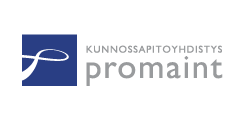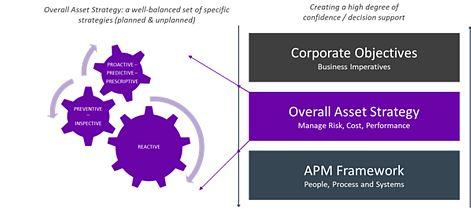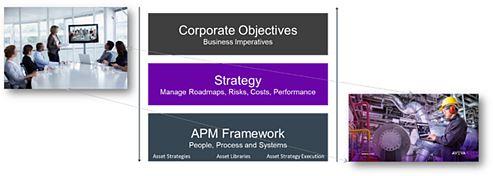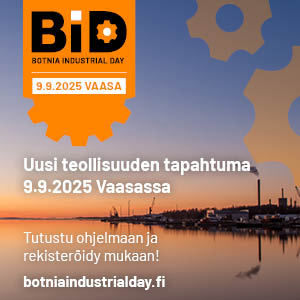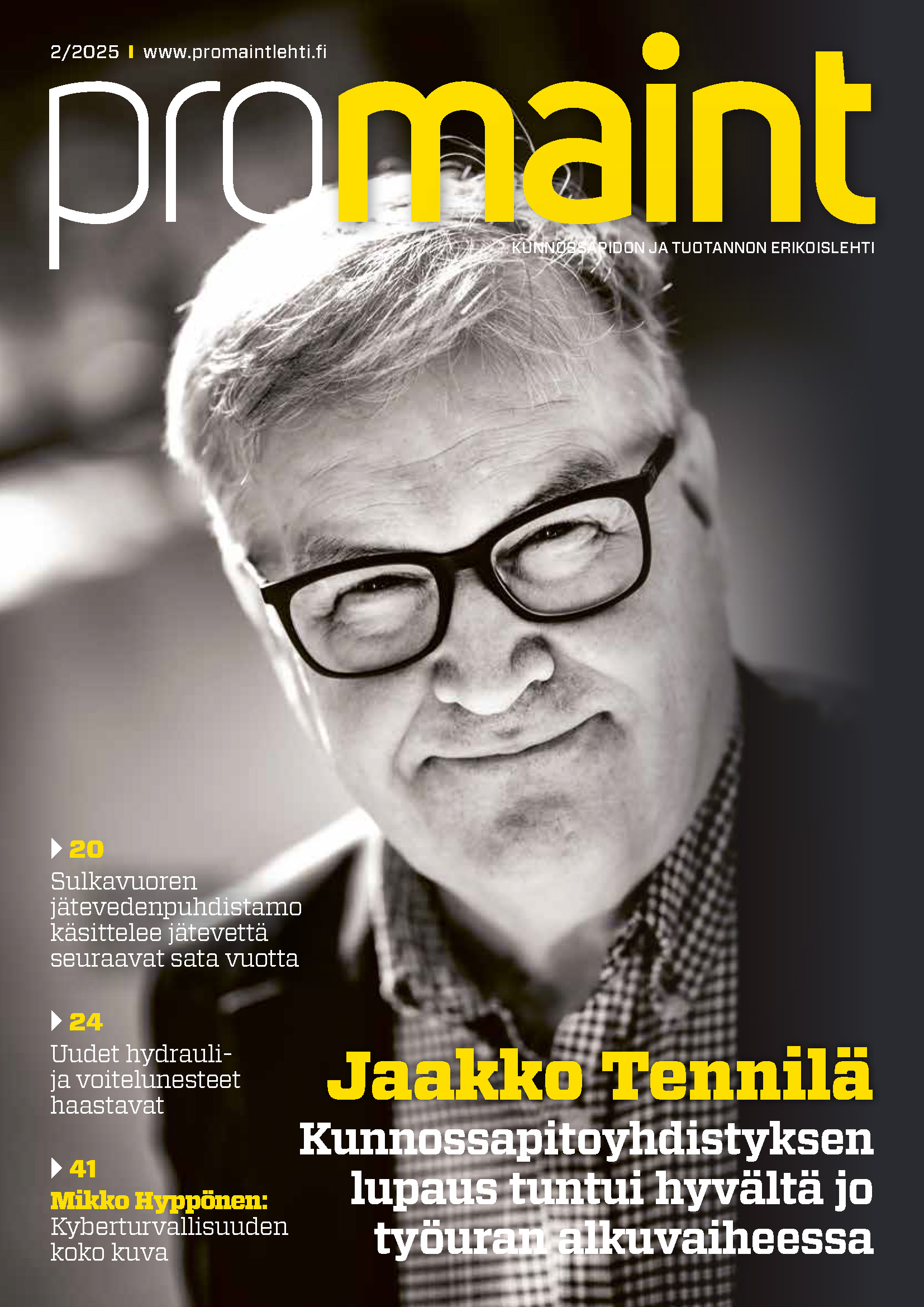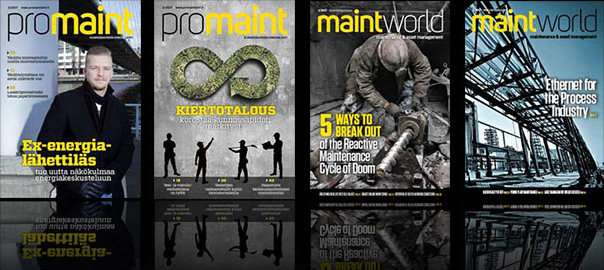5 Key Takeaways from Decades of Successful Asset Management
Learn how to bring your Asset Management Strategy to the next level
Andrew Reed
Marketing Manager – UK, Nordics & Sub Saharan Africa
I still remember the "aha" moment as it unfolded during one of my favorite Assessment assignments. We were at a beautiful pharma facility in South America, but what absolutely stood out as the Operations Manager showed us around wasn't the melodic humming and drumming of industrial machinery, but the level of engagement you could feel with every employee we spoke with.
This facility had an impressive team, all using a true collection of Total Productive Maintenance (TPM) and LEAN principles – such as 5S, Working Culture, Visual Management, Standup Meetings, and Kaizen improvement initiatives. It was clear to see how much the people were engaged to bring their TPM journey forward.
But what also became apparent during the Assessment was the enormous disconnect between the site Master Plan, their great working culture and overall Asset Performance, versus the money the company was spending to maintain this 30-year old facility. Despite all this employee engagement and adoption of best-practices, performance-wise the facility and the teams running it were still way under industry benchmarks. How could this be?
Watch the On-Demand webinar!
Defining Success in an Asset Performance Management Strategy
When businesses talk of successful asset management, the conversation tends to go one of two ways, technology vs people and processes.
While neither of these perspectives is wrong, each one individually misses the overall objective of what an APM strategy is all about - combining People, Process, Systems, Data and Culture into a holistic asset management strategy to address the complexities of modern industrial businesses.
The fact is, process adoption will simply fail if you don't have the right technology with the right people to support it.
I believe there are five main things to consider when looking at Asset Management from a holistic standpoint.
1. Empower your people by aligning their roles to their talents
By matching each employee's role as closely as possible to their natural characteristics, you create an environment where people can excel in work effectiveness and efficiency. Turnover reduces, and people feel empowered to make a real impact.
Streamlining and re-aligning the roles and responsibilities of key positions leads to performance increases in any Asset Management organization:
- Asset Manager
- Reliability Engineer
- Data Analyst/Data Engineer
- Work Planner/Preparator/MRO Supply Coordinator
- Scheduler
- Shop Floor Coordinator/Team Lead
- Warehouse Manager/Technical Buyer
- Eliminating conflicting roles and tasks brings employees back to their strengths and leads to increased work efficiency and effectiveness by up to 25%.
2. Unleash the data flow between systems and people through streamlined processes
The most effective asset management processes are driven by data, streamlined between departments, and contain a closed loop for continuous evaluation.
I've learned from numerous plant assessments that a lot of hidden value potential is present at tactical and operational levels, enforcing the shop floor to compensate for Asset Information flaws, and misalignments between data models and different roles in the organization. Quite often, these flaws are encountered on a large-scale, resulting in an unnecessarily high risk of performance losses.
Becoming aware of these flaws and working to continuously improve them is an easy optimization win that most companies miss.
3. Make sure you can translate your company's business objectives for every person in every role
Asset Performance Management
Cascading down a cost reduction target or asset uptime goal looks rather easy, but it isn't! If your employees don't know precisely how they can contribute to your business objectives in their daily tasks, improvements will be based on personal interpretations and could be mere coincidence.
Risk-Based Thinking is needed to translate generic business objectives into actionable thresholds within your Asset Performance Management (APM) processes to guarantee the business is making the right strategic decisions.
Reliability-Centered Maintenance (RCM)
Risk-Based Thinking goes far beyond "just" conducting Reliability-Centered Maintenance (RCM) studies or training your employees in Failure Mode, Effects, and Criticality Analysis (FMECA) studies. Risk-based principles, combined with actual performance insights, should be in the heart of nearly all trigger-point and decision moments in your APM Processes – from Asset Investment Proposal over Risk Based Maintenance Strategies, to daily Workflow gate-keeping and prioritization. Make sure everyone knows how they are contributing to the business.
4. Benchmarking is a great tool to explore your potential and defined ambitions; be sure you grab the whole story
Your company must be able to constantly measure your Asset Performance at multiple aggregation levels. A proper Loss Accounting System will tell you exactly why your Overall Equipment Effectiveness (OEE) is deviating from the norm, while more generic KPIs can provide insight into the performance of your APM work processes.
But, just as importantly, is the ability to communicate these insights to everyone in the company. I often see a disconnect in priorities between technically-oriented people operating the assets that drive the business and the needs of the businesses leadership team. However, as an Asset Manager, you have to be able to tell your performance story, improvement plan and financial outlooks on a true business level, using business language.
One example of telling the APM story at a senior financial level is to declare the trends in your Overall Maintenance Costs and Replacement Investments versus the Asset Replacement Value. This is an industry-agnostic ratio that gives your company an indication of how well your asset management is performing.
But without understanding the overall Business Context of these ratios, your story will probably not drive a lot of useful decisions. To set the right context, it may be useful to keep in mind:
Overall plant age and condition (health): An Asset Base that has been built and modified over the last 60 years requires a much higher structural Asset Replacement CAPEX ratio than a modern plant that was built along a streamlined design concept.
Supply Chain Characteristics: Which heavily influence the responsiveness and plannability of your overall maintenance work-logs and the way supply chain planning, operations and maintenance work together.
Remember that a potato with a conversion time of 48 hours into a chip shows completely different dynamics than an upstream oil-rig on the ocean, but both use the same industry-generic KPI of Overall Maintenance Costs and Replacement Investments versus Asset Replacement Value. Industry context is key.
5. To become predictable as a business – start with the end in mind
Technology continues to provide huge potential, and it is no understatement to say that the entire industry is just at the beginning of a new industrial era.
What can you do to make digital transformation pilots successful and ensure APM digitalization will contribute to your business objectives? I recommend:
Start to (re-)define your specific Success Criteria for every pilot you initiate, without getting distracted by the technology itself. Too many pilots are still technology-driven, attempting to test the boundaries of new applications, rather than keeping the end-goal in mind.
Re-design, or at least re-consider, your existing business processes from end-to-end. After all, what do you gain if technology provides you with early-warnings and predicts asset failures, but you can't get the required actions across in your core work processes?
Calculating and communicating your improvement ROIs – freeing up funding for your future journey is imperative.
As with the pharma facility I visited in South America, even when so many things are going right, Asset Management can only be truly successful by taking a holistic view of the business – understanding that each component, and each small incremental improvement the business achieves matters.
Asset ManagementIn the hundreds of asset-intensive organizations AVEVA has worked in over the years, only a small number of organizations have demonstrated full insight in their Current State and Future Plans. Moreover, the majority of organizations tend to overestimate the feasibility of their business goals; targets are set or imposed, but seldom achieved.
While many companies recognize the potential of improving their APM strategy, we find that many simply do not know where to start. And while the basics, such as visual asset health, may be the same across various organizations, the individual approach to maintenance across business contexts differs significantly.
I have presented more on this specific topic on the webinar "The end of industrial science fiction – back to practicality"
I invite you to learn more on how strategic asset management can benefit your organization.
Mikko Leppänen, Tekninen johtaja Ramboll Finland Oy
Rotia rakennetun omaisuuden hallintaan
Iiris Paavisto
Kunnossapidon tärkeä rooli turvallisuudessa
Timo Lehtinen
Tervehdys, aloitin työni Promaint ry:n uutena toiminnanjohtajana huhtikuun alussa.
Toni Rauvanto
Osaatko sinä suhtautua rakentavasti vääjäämättömiin muutoksiin?
Ville Ojanen
Kohti uusiutuvaa omaisuuden hallintaa?
Tatu Pekkarinen Senior reliability expert AFRY Finland oy
”Datan kerääminen teollisuudessa – Yhteistyöllä kohti parempaa käyttövarmuutta”
Kaj Råtts Päällikkö, Tuotanto-Omaisuudenhoito Pohjolan Voima OYJ
Miltä kunnossapidon tulevaisuus näyttää vuonna 2033?
Jaakko Tennilä Toiminnanjohtaja, Kunnossapitoyhdistys Promaint ry
Promaint ry 50 vuotta – Osaajien kehittäminen
Elias Hakalehto Mikrobiologi, Bioteknologi Finnoflag Oy
Mikrobit, bioteknologia ja huoltovarmuus
Nina Garlo-Melkas
Teknologia 22 kutsuu kunnossapidon ammattilaiset koolle
Susanna Sovio-Veikkolainen Luotettavuusinsinööri SSAB EUROPE OY
Teräksen vihreä valmistustapa mullistaa kunnossapidonkin
FINN-Tarkastus Oy
Nostotyöhenkilöstön kouluttaminen – onko kortti taskuun 3 tunnissa oikea tapa?
Hannu Niittymaa
Kunnossapidon digitalisaatio ja ICT-kokonaisarkkitehtuuri
Nina Garlo-Melkas
Kesätyö on mainio sisäänajo kunnossapitoalalle
Robert Valkama
Esineiden internet tehtaan lattialla
Anil Joshi, Tata Consultancy Services
Miten valmistava teollisuus selviää koronakriisistä vahvempana eteenpäin
Nina Garlo-Melkas
Teknologiasta Suomen teollisuuden kilpailuvaltti
Matti Olli, Wärtsilä Marine Power
Wärtsilän etäpalvelut mahdollistavat normaalin toiminnan pandemiasta huolimatta
Katja Toropainen
Ovatko monimuotoisuus ja inklusiivisuus seuraava vastuullisuus?
Markus Glasser, EOS
Teollinen 3D-tulostus: koronakriisin kolme opetusta
Alf Rehn, Åbo Akademin liiketaloustieteen professori
Innovaatiot ovat yrityksen huoltoa
Timo Välkky
Kuinka kesätyö vie konepajoilta tunturien huipuille
Kimmo Korpela, Vaisala Oyj
ASIANTUNTIJAN ÄÄNI: Mittausteknologia mahdollistaa terveemmän huomisen
Juha Kautto
ASIANTUNTIJAN ÄÄNI: 30 vuotta kunnonvalvonnan parissa
Marko Lehtosaari, Väylävirasto
ASIANTUNTIJAN ÄÄNI: Varaudutaan yhdessä toimintavarmuuteen
Markus Nätti, Viasor Oy
ASIANTUNTIJAN ÄÄNI: COVID-19 vaikuttaa myös teollisuuden kunnossapitoon
Jaakko Tennilä
ASIANTUNTIJAN ÄÄNI: Kunnossa kaiken aikaa
Jussi Niinimäki
Älykkäät ja omavaraiset kiinteistöt – vastuullisuuden ja kestävän kehityksen tie
Sami Nikander
Kuljetusten toimivuus on edellytys sille, että kemianteollisuus voi tehdä osansa
Andrew Reed
5 Key Takeaways from Decades of Successful Asset Management
Nina Garlo-Melkas
Hiljainen tieto pitää Suomen teollisuuden äänessä
Nina Garlo-Melkas
Maailma tarvitsee tulevaisuuden teknologiaosaajia
Antti Väisänen
Pölynhallinta on työturvallisuutta
Timo Halonen
Vesiosaaminen on Suomelle kasvuliiketoiminnan ja viennin mahdollisuus
Martti Hakonen
Varmista osaamistasosi ylläpito
Katja Lahti
Virheitä ei voi estää
Kari Wihlman, Väylän pääjohtaja
Toimiva väyläverkko mahdollistaa Suomen hyvinvoinnin, kilpailukyvyn ja kestävän kasvun
Jenna Kauppila
Sähkötyöturvallisuus sulaketta vaihdettaessa
Rasmus Pinomaa
Energiatehokkuudella kohti hiilineutraalia kemianteollisuutta
Robert Valkama
Ensin oli tehdas, sitten saapui tietoturva
Kari Wihlman
Kunnossapito varmistaa väylien päivittäisen liikennöitävyyden - Nykyrahoitus ei riitä
Ira Hanf
Aito vastuullisuus vaatii liiketoimintamallien radikaalia muutosta
Tomi Niemi
Tulokset tapahtumien keskiössä
Jenni Larjomaa
Insinöörien työttömyyden monet kasvot
Joni Räsänen
Koneet, tekoäly ja robotit, entäs me?
Jorma Mikkonen
Muovijätteen arvo talteen
Petri Lundahl
Hyvä tapa toimia sisältää lupauksen uudistumisesta
Terhi Hirvikorpi
Tulevaisuus on edelleen omissa käsissämme
Kari Malkamäki
Suurhankkeet tuovat kasvua Pohjois-Suomen teollisuusyrityksille
Marko Lehtosaari
Laadukas kunnossapito liikuttaa koko yhteiskuntaa
Jenni Koivunen
Digitaalisuus kuuluu kaikille
Tapio S. Katko
Toimiva vesihuolto ei ole itsestäänselvyys
Vesa Vähänen
Nykyaikainen teollisuuden valaistus – ei vain säästöjen vuoksi
Petri Asikainen
Teollinen Internet on arvoa tuottavaa arkipäivää
Juho Liljeroos
Uudet liiketoimintamallit ravistelevat kunnossapidon kenttää
Juho Ristimäki
Vihreä vallankumous tulee – oletko valmis?
Michael Hanf



